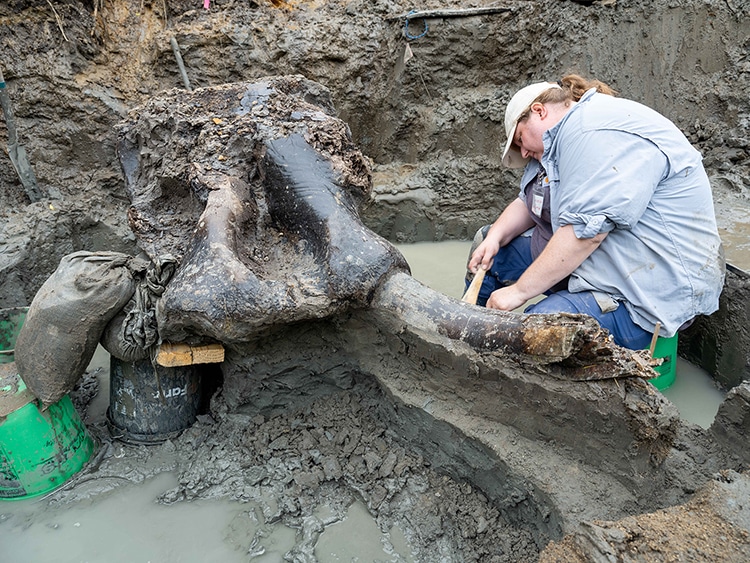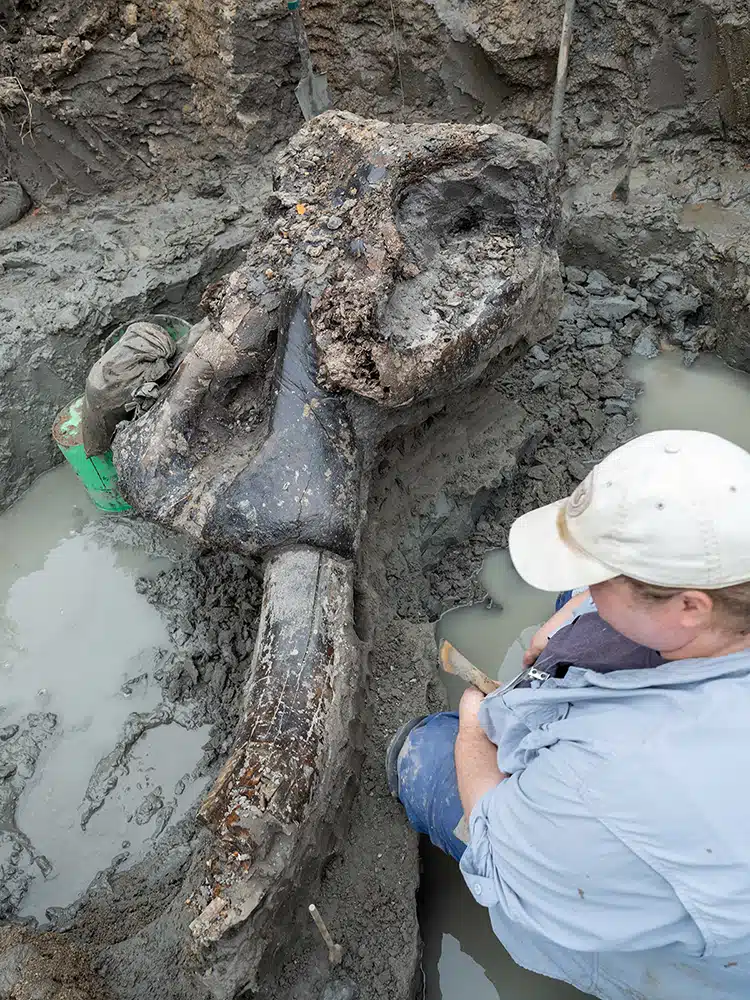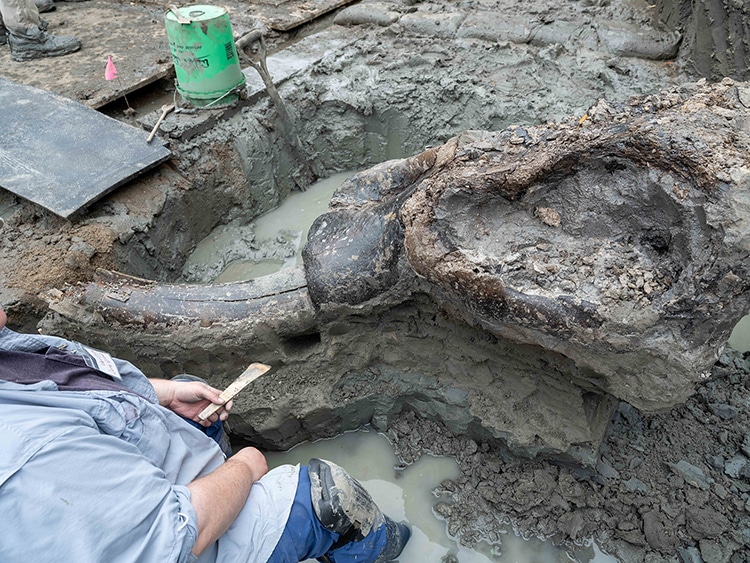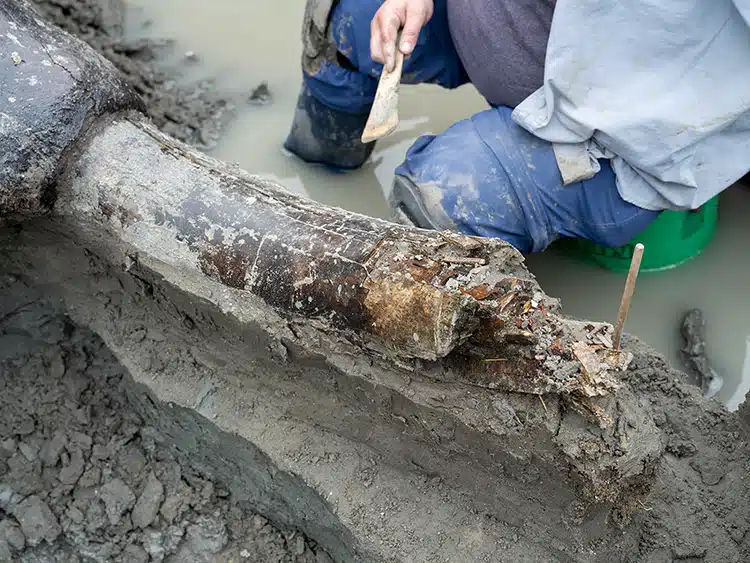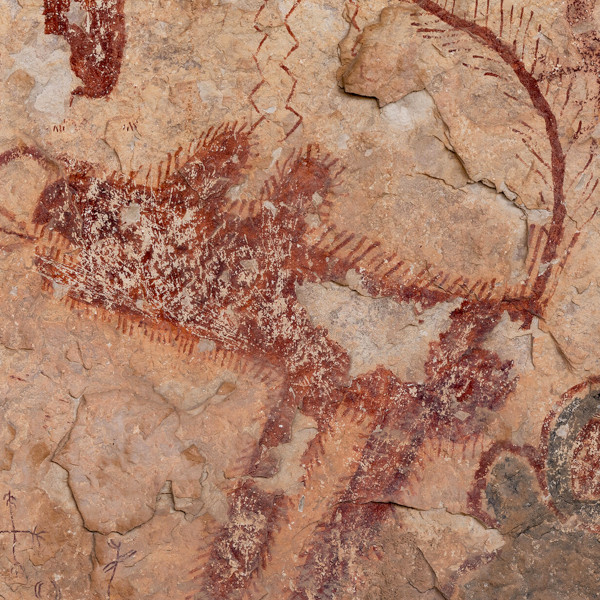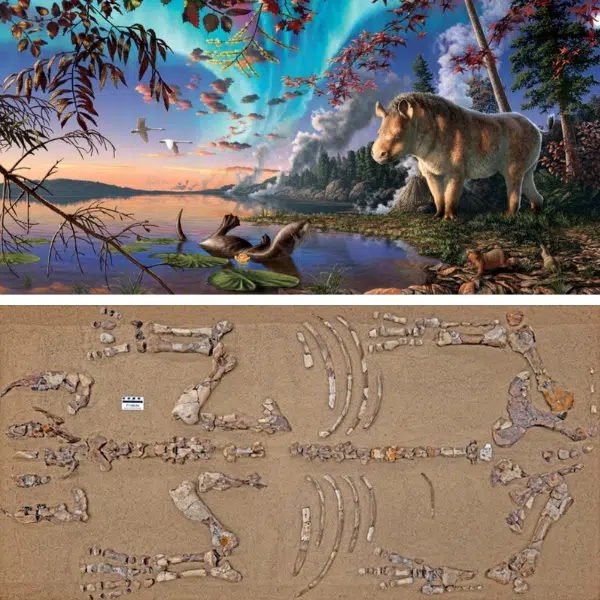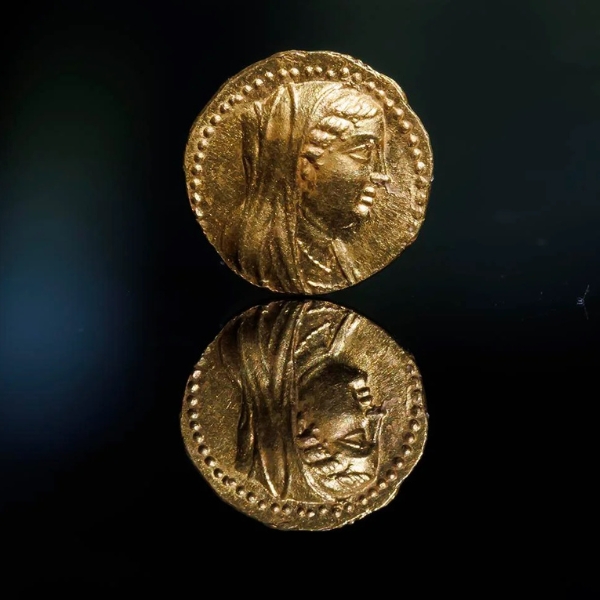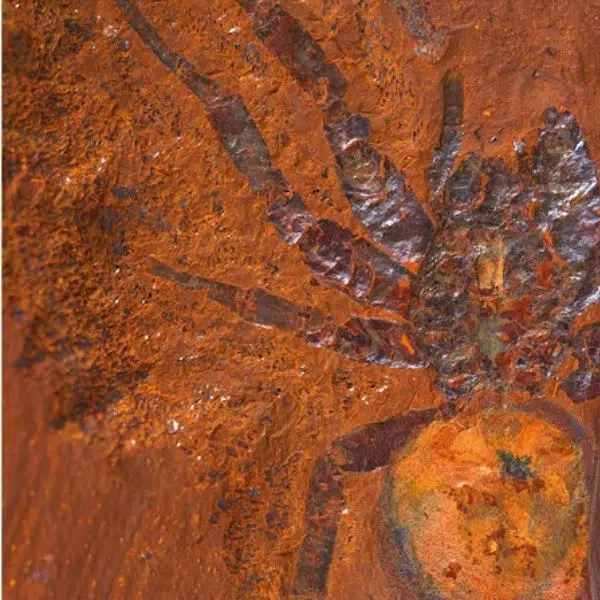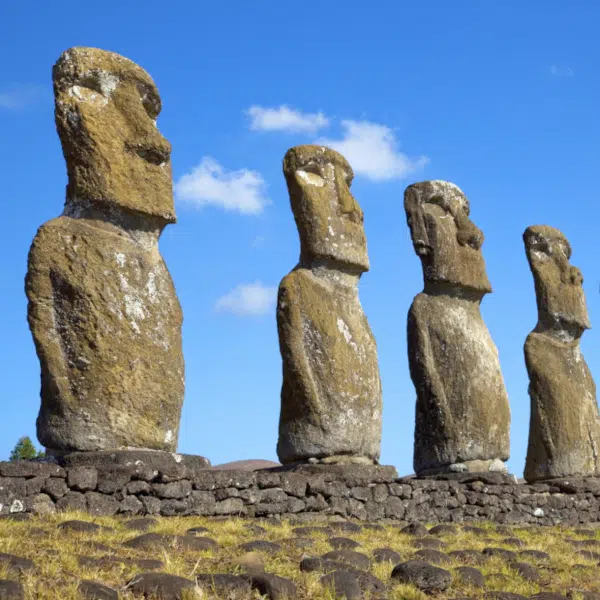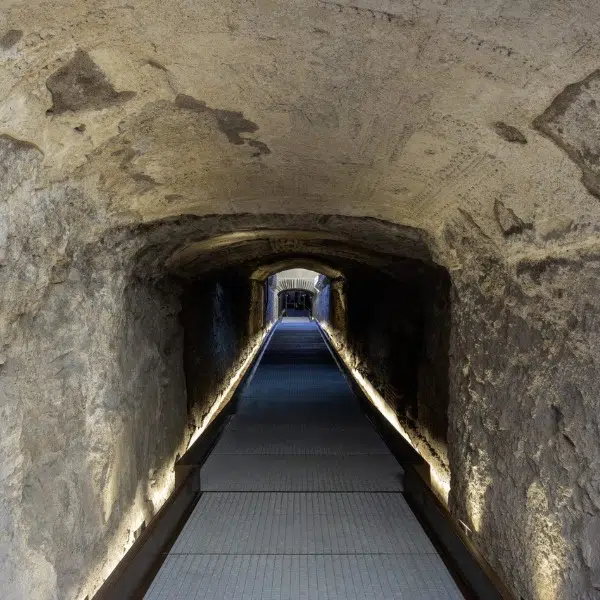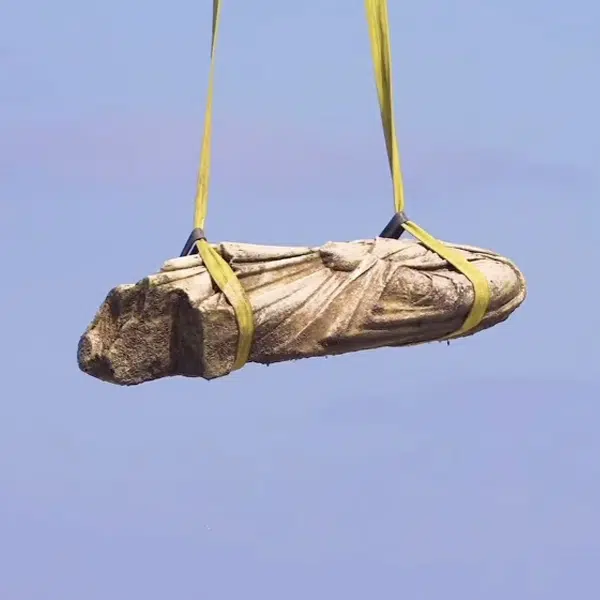Mastodons once lumbered across North America. A member of the same animal family as mammoths and modern-day elephants, these ancient creatures roamed for millions of years, but died out in the end of the Pleistocene, around 10,500 years ago. Their decline coincided with several other critical changes, including the receding of the Ice Age glaciers and the spread of human beings across the continent. Discovering a fossil from this time period is an exciting chance to learn more about a time of transition. Intriguingly, a mastodon skull recently excavated from an Iowa riverbed sheds light on this ancient era.
The remains of the mastodon, scientifically known as Mammut americanum, were discovered after a local of rural Wayne County, Iowa, posted a photo of himself holding a large, unearthed bone which turned out to be a mastodon femur. Archeologists from the University of Iowa pursued this lead all the way to the muddy banks of a creek. In the bank, they discovered a tusk, seemingly attached to a skull. Further excavating proved this supposition correct.
The 2-foot tusk that projected from the massive skull offers intriguing possibilities for the researchers. The tusk formation can actually reveal quite a lot about the creature. “Apparently there are techniques now to determine how many calves a female mastodon had that get recorded as a chemical signature because of the changes in the body chemistry during the pregnancy and the birth,” John Doershuk, Iowa’s state archaeologist, told Iowa Public Radio. “And that gets recorded in the tusks.”
Discovered near the creek during the excavation were tools crafted in stone used by early human residents of the area. While the mastodon skull dates to 13,600 years ago, the tools are more recent by a couple millennia. However, at the time the mastodon frolicked through Iowa, the earliest human inhabitants of the state were arriving.
“We’re really hoping to find evidence of human interaction with this creature—perhaps the projectile points and knives that were used to kill the animal and do initial butchering,” archeologist Doershuk said in a statement. “There’s also potential evidence on the bones themselves—there could be identifiable cut marks.”
While human activity and climate change combined to cause the decline of the mastodon, this individual could tell a unique story of interacting species.
Discovered in a riverbed in Iowa, a mastodon skull tells the story of an ending Ice Age and burgeoning human presence in what is now the American midwest.
A protruding tusk could unveil much more about the creature.
“Apparently there are techniques now to determine how many calves a female mastodon had that get recorded as a chemical signature because of the changes in the body chemistry during the pregnancy and the birth. And that gets recorded in the tusks.”
h/t: [Smithsonian Magazine]
Related Articles:
Meet the Lokiceratops, a Dinosaur With Unique Horns
Artist Imagines Beloved Pop Culture Characters as “Cartoon Fossils” in a Museum
Scientists Discover Where the Asteroid That Killed the Dinosaurs Came From
9,000-Year-Old Petroglyphs Reveal Early Humans Knew About Dinosaurs
